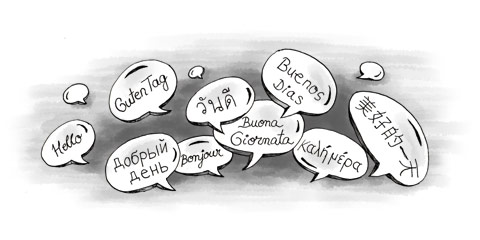Dialects in South Korea
Several dialects are spoken in South Korea:
The Seoul dialect (서울말), or Gyeonggi is spoken in Gyeonggi, Incheon, Seoul (South Korea), and Kaesŏng (North Korea). It is the basis of the standard language.
The Yeongseo dialects (영서 방언) are spoken in the Yeongseo region of Gangwon Province in South Korea.
The Chungcheong dialects (충청 방언) are the dialects of the Chungcheong (Hoseo) region of South Korea, including the city of Daejeon.
The Gyeongsang dialects (경상 방언), also called Southeastern dialects are typical for the Gyeongsang (Yeongnam) region of South Korea, including the cities of Busan, Daegu, Ulsan. They are easily distinguishable from the Seoul dialect, because of their more varied pitch.
The Jeolla dialects (전라 방언), or Southwestern dialects are spoken in the Jeolla (Honam) region of South Korea, including the city of Gwangju.
The Jeju dialect (제주 방언) is spoken on the Jeju Island, off the southwest coast of South Korea, and is sometimes considered a separate Korean language.
People of Korea began writing using Chinese characters (or Hanja) in ancient times. Due to difficulties with learning the classical Chinese characters, reading and writing was restricted to higher social classes for many centuries. In the fifteenth century a team of scholars, assigned by King Sejong, a Korean ruler, created a unique alphabet- Hangul.
The 24 letters of the Hangul alphabet are usually arranged in blocks for each syllable, which seems to resemble Chinese characters. In reality, Korean syllables contain individual phonetically pronounced letters in a way similar to the Latin alphabet. Hangul made it easier for the underprivileged to become literate. It became popular in the nineteenth century when Koreans started trying to shake off Chinese influences. The sound system of Korean consists of 21 consonants and ten vowels.
Because of the use of Chinese characters there is a substantial quantity of loan words in the Korean vocabulary. More than half of the Korean words are Chinese-originated loan words. Even though Chinese loan words and Korean-originated words have always coexisted, the Chinese loan words came to dominate, erasing a lot of the native Korean equivalents.
There have been several attempts to abolish the use of Chinese characters in the past, but the solutions were always temporary. Today in South Korea, following government policy, students in secondary schools must learn 1,800 basic Chinese characters. Some concerned scholars and organizations have tried to advocate the purification of Korean through the media and academic journals, but the government has never been engaged with this kind of movement.
English is the most popular second language taught in Korea, but it is not freely spoken by the majority of people.
Peculiarities of the South Korean language
Korean is an agglutinative language and it is considered a “language isolate”. This means that there is no definite proof that it shares roots with an older tongue, that is also the base for other languages. It shares similarities with the Chinese and Japanese language groups. Borrowings from Indian and European languages can be found, but older forms of Korean are not closely tied to the roots of any of these languages.
Korean language does not have articles. Because of this, smaller details of meaning are usually expressed by sticking small modifiers to a whole word (with the base word generally remaining unchanged).
Syllables always begin with a consonant followed by a vowel. It could stop there, or there could be another vowel, or consonant, or both. Syllables begin with a consonant on the left or top and the vowel(s) and other consonant(s) follow to the right or bottom.
Writing in Korean moves from left to right and top to bottom. Words are separated by spaces, and syllables are right next to each other.
There are no tones and not many stressed syllables in the Korean language. The consonants sometimes change sounds at the ends of words, passing into the next word.The sounds are not very difficult to pronounce but are different from western values.
Korean has a completely free word order. Korean predicates do not agree in gender, number or person with their subjects. They agree with honorifics and politeness. There are three main speech levels related to politeness: plain, polite and deferential. Koreans avoid second person singular pronouns, especially when using honorific forms.
Verbs do not change according to person or plural, but they have several degrees of politeness forms to match the age and seniority of the addressed person. Speech should be modified based on the speaker’s own social status compared to the status of the person they are talking to in case they want to avoid coming off as rude.
The most common politeness level in Korean has most verbs ending in 요 (yo).This a casual but polite form which you can use with anyone– older people, acquaintances, bosses.
Over 400 endings can be added to the base of a word. In some verb forms, seven sequence positions with different endings can occur: honorific, tense, aspect, modal, formal, aspect and mood.
To learn the numbers you must learn two sets of Korean numbers and know when to use them. The distinction between the two numeral systems is very important. Everything that can be counted will use one of the two systems, but in rare cases both.

